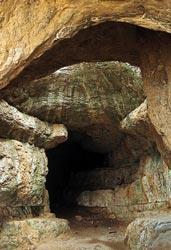Bánhida on:
[Wikipedia]
[Google]
[Amazon]
 Bánhida (in German: ''Weinhild'') is the oldest quarter of the city of Tatabánya in north-western
Bánhida (in German: ''Weinhild'') is the oldest quarter of the city of Tatabánya in north-western
 In the diplomas the name of village is mentioned first in 1288. In the later diplomas the village is in the service of castles Vitány and Tata. In the medieval diplomas, two villages are consistently mentioned: Bánhyda maior and Bánhyda minor. The name of Mészáros (butcher) street refers to the ancient transportation road of our successful export item, beef.
In the 16th century the
In the diplomas the name of village is mentioned first in 1288. In the later diplomas the village is in the service of castles Vitány and Tata. In the medieval diplomas, two villages are consistently mentioned: Bánhyda maior and Bánhyda minor. The name of Mészáros (butcher) street refers to the ancient transportation road of our successful export item, beef.
In the 16th century the
Image:Szelim-bg-north-Cave.jpg, Szelim cave
Image:Turul-Tb-front.jpg ,
 Bánhida (in German: ''Weinhild'') is the oldest quarter of the city of Tatabánya in north-western
Bánhida (in German: ''Weinhild'') is the oldest quarter of the city of Tatabánya in north-western Hungary
Hungary is a landlocked country in Central Europe. Spanning much of the Pannonian Basin, Carpathian Basin, it is bordered by Slovakia to the north, Ukraine to the northeast, Romania to the east and southeast, Serbia to the south, Croatia and ...
. Inhabited since ancient times, excavations in this area have uncovered finds from the Bronze Age
The Bronze Age () was a historical period characterised principally by the use of bronze tools and the development of complex urban societies, as well as the adoption of writing in some areas. The Bronze Age is the middle principal period of ...
and the Roman era. It is hypothesized that the name derives from a former landowner named Bán who owned a bridge across the Rákos River (now called Által-ér).
Bánhida in the middle age
By chronicle of Anonymus:Árpád
Árpád (; 845 – 907) was the head of the confederation of the Magyar tribes at the turn of the 9th and 10th centuries. He might have been either the sacred ruler or '' kende'' of the Hungarians, or their military leader or '' g ...
, the second Grand Prince of the Magyars, destroyed the army of Szvatopluk here. The legend was immortalized by Árpád Feszty in a huge painting on the thousandth anniversary of the event. The largest bird statue of Central Europe, the Turul monument, was also erected in honor of the millennium. The work of Gyula Donáth, which stands on Stone-Hill, above the city, refers to the totem animal of our ancestors.
 In the diplomas the name of village is mentioned first in 1288. In the later diplomas the village is in the service of castles Vitány and Tata. In the medieval diplomas, two villages are consistently mentioned: Bánhyda maior and Bánhyda minor. The name of Mészáros (butcher) street refers to the ancient transportation road of our successful export item, beef.
In the 16th century the
In the diplomas the name of village is mentioned first in 1288. In the later diplomas the village is in the service of castles Vitány and Tata. In the medieval diplomas, two villages are consistently mentioned: Bánhyda maior and Bánhyda minor. The name of Mészáros (butcher) street refers to the ancient transportation road of our successful export item, beef.
In the 16th century the Ottomans
Ottoman may refer to:
* Osman I, historically known in English as "Ottoman I", founder of the Ottoman Empire
* Osman II, historically known in English as "Ottoman II"
* Ottoman Empire
The Ottoman Empire (), also called the Turkish Empir ...
occupied the area (''v. tale of Szelim cave'').
Around this time the inhabitants became Protestants
Protestantism is a branch of Christianity that emphasizes Justification (theology), justification of sinners Sola fide, through faith alone, the teaching that Salvation in Christianity, salvation comes by unmerited Grace in Christianity, divin ...
. Later, (in the 18th century) its feudal
Feudalism, also known as the feudal system, was a combination of legal, economic, military, cultural, and political customs that flourished in Middle Ages, medieval Europe from the 9th to 15th centuries. Broadly defined, it was a way of struc ...
lords, the Esterházys populated the area with Roman Catholic
The Catholic Church (), also known as the Roman Catholic Church, is the largest Christian church, with 1.27 to 1.41 billion baptized Catholics worldwide as of 2025. It is among the world's oldest and largest international institut ...
Slovak settlers.
Opening of the mines, the loss of the independence
The opening of the mines at the end of the 19th century caused significant changes in the character and life of the village. During the industrialization wave which took over the country after World War II several Hungarian towns were developed into large industrial cities. The four villages (Tatabánya, Alsógalla, Felsőgalla, Bánhida) were united on October 1, 1947, under the name Tatabánya, and it was elevated to town status.Gallery
Turul
The Turul is a mythological bird of prey, mostly depicted as a falcon, in Hungarian tradition and Turkic tradition, and a national symbol of Hungarians.
Origin
The Turul is probably based on a large falcon. The Hungarian word ''turul'' meant ...
Image:Bánhida1.JPG, Roman Catholic Church – St. Michael
Image:I. világháborús emlékmű (Görömbey Imre, 1927), Bánhida5.jpg, First World War monument
Image:2. világháborús emlékmű, Bánhida.jpg, Second World War monument
Image:Bánhidsky slovensky dom.jpg, Bánhidian Slovak house
External links
{{DEFAULTSORT:Banhida Tatabánya Former municipalities of Hungary